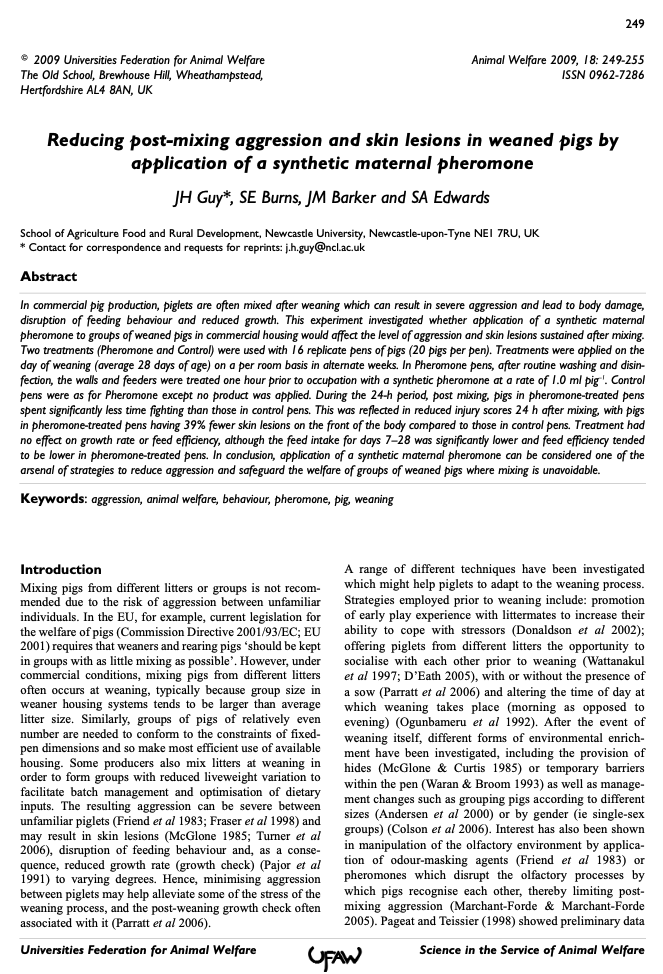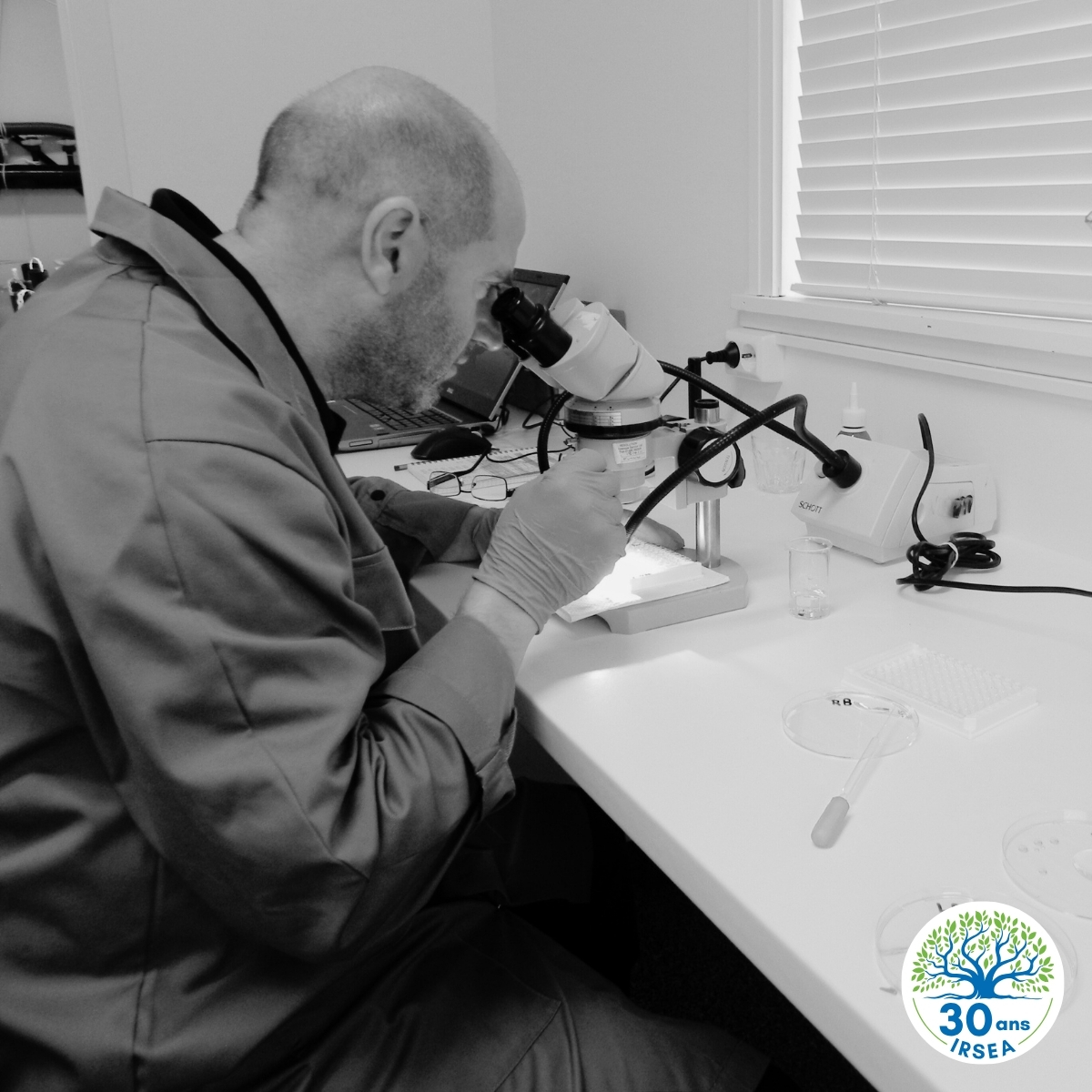Abstract:
In commercial pig production, piglets are often mixed after weaning which can result in severe aggression and lead to body damage, disruption of feeding behaviour and reduced growth. This experiment investigated whether application of a synthetic maternal pheromone to groups of weaned pigs in commercial housing would affect the level of aggression and skin lesions sustained after mixing. Two treatments (Pheromone and Control) were used with 16 replicate pens of pigs (20 pigs per pen). Treatments were applied on the day of weaning (average 28 days of age) on a per room basis in alternate weeks. In Pheromone pens, after routine washing and disin- fection, the walls and feeders were treated one hour prior to occupation with a synthetic pheromone at a rate of 1.0 ml pig–1. Control pens were as for Pheromone except no product was applied. During the 24-h period, post mixing, pigs in pheromone-treated pens spent significantly less time fighting than those in control pens. This was reflected in reduced injury scores 24 h after mixing, with pigs in pheromone-treated pens having 39% fewer skin lesions on the front of the body compared to those in control pens. Treatment had no effect on growth rate or feed efficiency, although the feed intake for days 7–28 was significantly lower and feed efficiency tended to be lower in pheromone-treated pens. In conclusion, application of a synthetic maternal pheromone can be considered one of the arsenal of strategies to reduce aggression and safeguard the welfare of groups of weaned pigs where mixing is unavoidable.
Auteur: JH Guy, SE Burns, JM Barker and SA Edwards
En savoir plus: …





